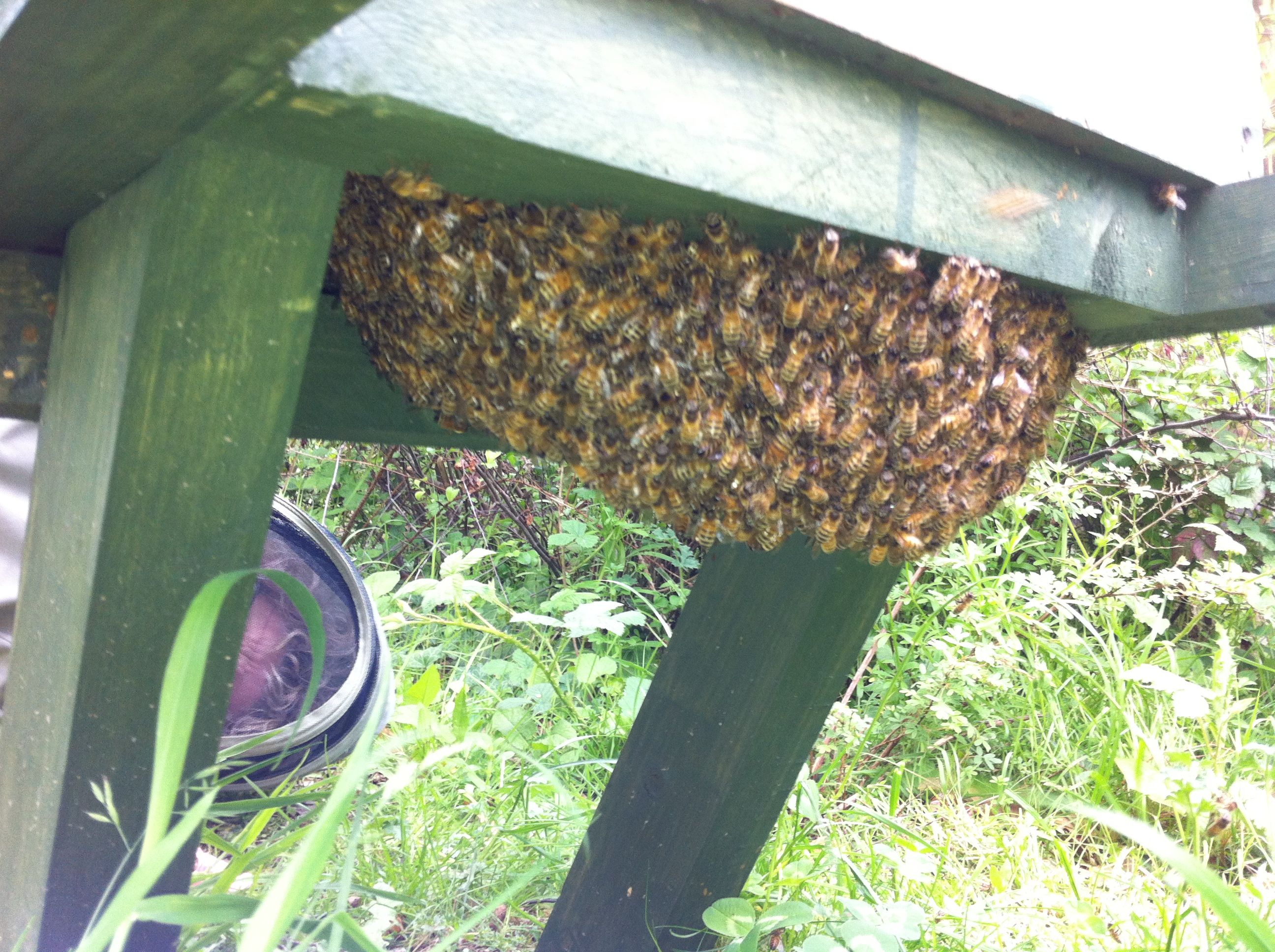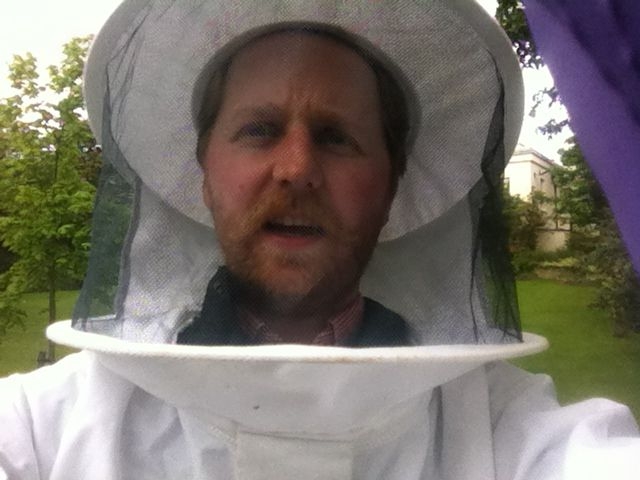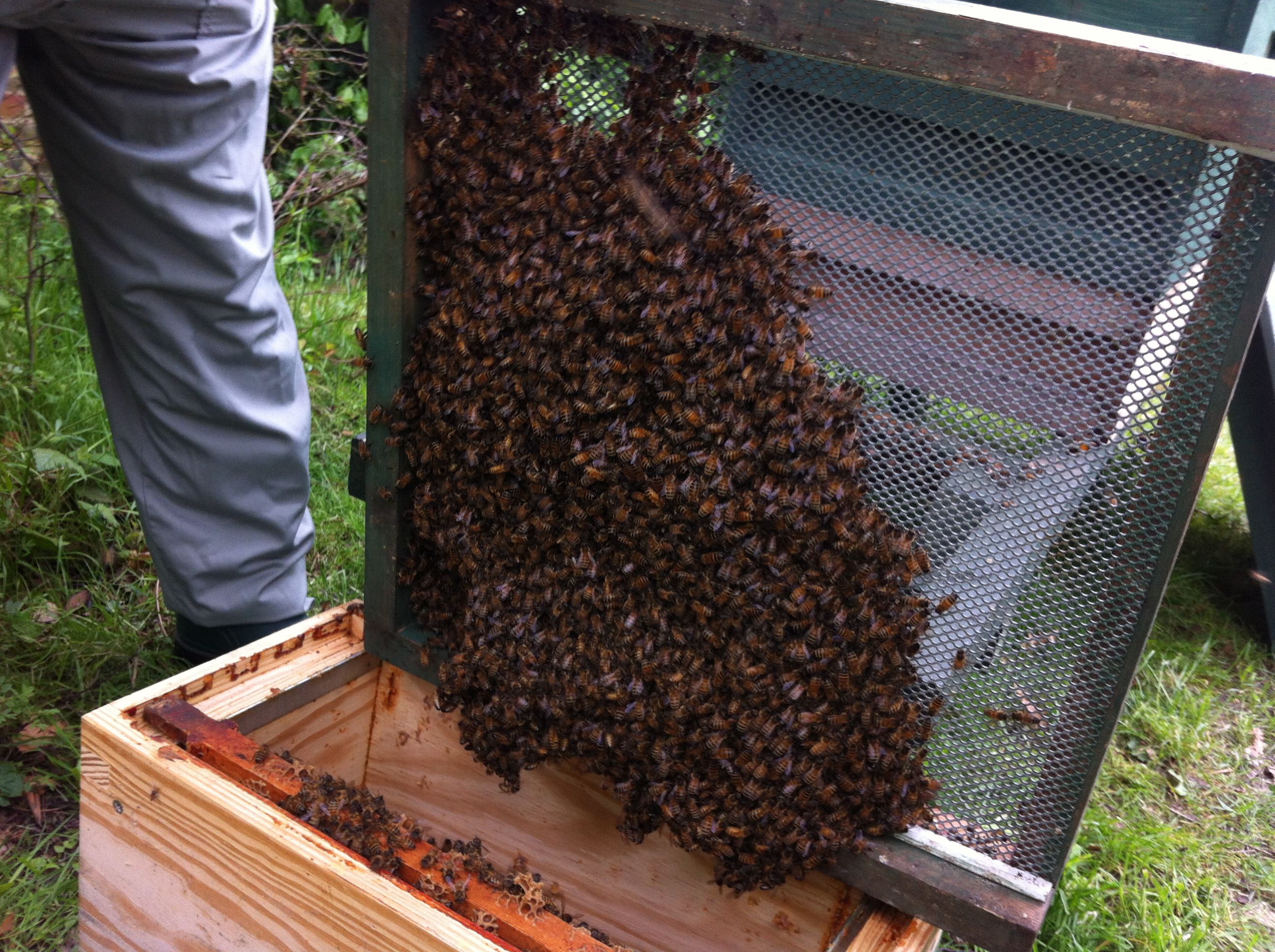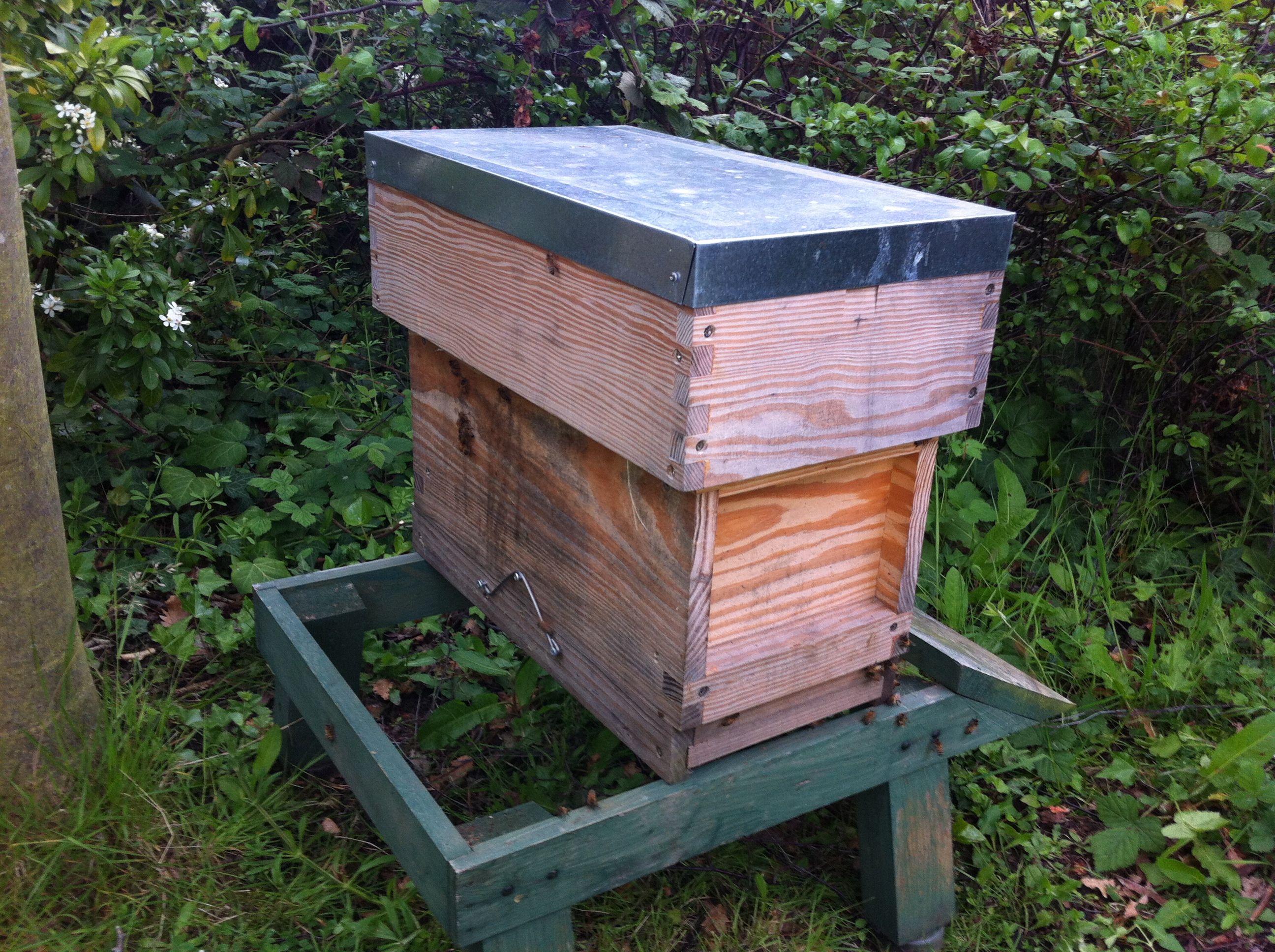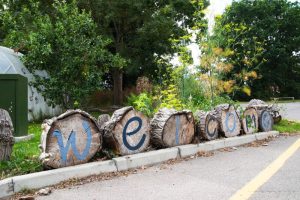Last Friday saw our bees at Southwood House in Avery Hill start a swarm and the formation of a new colony. The building services team spotted the bees gathering in a swarm underneath one of the two hives while doing a walk-round check of the campus. After a couple of telephone conversations with our beekeepers, John and Christine Hird (the beekepers for our Southwood House bees) decided to come and visit the bees and see what ought to be done.
When John and Christine arrived we donned the protective clothing and had a closer look at the swarm that was forming. Bees tend to swarm when they are looking to replace an older queen with a new one and is part of the reproductive cycle of a hive. The hive will create some queen cells and the queen will lay eggs in these, then the hive will stop feeding the queen so that she is lighter and more able to fly. When the old queen leaves the hive (sometimes taking as many as 60% of the bees with her) she will find a resting place while the scouts look for potential new places to form a hive. The scouts go off to look for new loactions and the new location is determined by the level of excitement the scouts communicate about to the hive. This process normally takes around three days and the bees tend to be non-agressive during this time as there is less focus on defending brood.
When we had a closer look at the bees it was clear that this is what they were doing but rather than let the scouts find a new home and lose the swarm of bees John and Christine decided to capture the swarm and place them in a new hive or a ‘nuc’. This would lead to us getting two hives from the one hive that had started swarming. To do this John opened up the hive and started to look to see if the queen was there and look for queen cells. As expected there were a few queen cells and no sign of the queen bee in the hive, this meant the old queen had left and was looking to create a new hive and the remaining bees were looking after the queen cells and brood inside to get a new queen for the old hive. After the hive had been checked we then went to capture the swarm in the nuc.
Normally bees would swarm in a brach of a tree which would then require a litte shake to get them to fall into the new hive but as they were attached to the bottom of the hive this meant we had to take apart the hive and get the nuc right underneath it – with a couple of bashes and a couple of brushes the majority of the bees were in the nuc. The queen went in and soon enough the remaining bees on the bottom of the hive started to diminish as they followed the queen into it. The nuc was then fitted with a couple of frames so that the new hive could stat to form cells for the queen to lay eggs and the hive to bring up some new brood and of course seal off some honey too!






